Like many of you with an interest in natural medicine, my foray into this field was guided by altruism, as a way to reconnect to our shared human heritage, and the healing wisdom of the earth. It thus came somewhat of a surprise to me, when during my training and after when I began to practice, to see the degree to which moneyed interests controlled the natural health industry, reducing the sophisticated and subtle principles I had studied to a loud and obtuse marketing noise. Over the years as I have built up my experience and knowledge, I have had some occasion to work on the industry side of things, and although my tenure has thankfully been brief, it was sufficient to confirm everything I ever thought that was negative about it. This is why I generally avoid health food products (and health food stores) like the plague: I am just too aware of what goes on within the industry. Thus I encourage my patients, students and anyone who will listen, to seek their nutrition and health in wholesome food, rather than any kind of supplement.
Sieg über lebensmittel
Which brings me to “superfoods”, a term predicated on a comic-book fantasy that some foods, like some animals, are better than others. The concept of superfood suffers from a totalitarian perspective: like the übermensch idealized by Hitler, it’s a kind of eugenic proposition in which we select only the “special” foods, the ones to which all foods should aspire. At the very least, the concept of superfoods is a fetishization of food, confusing the basis of a healthy diet to justify the high cost of exotic, imported foods and supplements that do not live up to the hype. The reality is that “superfoods” are all around us, and have already been used without much fuss by different cultures for thousands of years. These are the foods you only eat in small quantities, as a category of nutrition that bridges food and medicine, such as bitter melon and shiitake mushroom, culinary herbs like turmeric and oregano, fruits including goji and juniper berries, and roots such as astragalus and dandelion. The properties and benefits of these so-called “superfoods” are all well-established within their respective cultural traditions, and to learn how to use them properly, it is incumbent upon each of us to learn something about these traditions. Only then will these so-called “superfoods” be placed in their proper context.
Stepping over the cow paddies
Over the next two posts, I am going to review a number of these so-called “superfoods” and allied supplements, and give you my uncensored opinion. Each “superfood” is rated on my index as follows:
![]() The product in question has merit, but the way it is marketed and used means that much of this is over-blown and confused.
The product in question has merit, but the way it is marketed and used means that much of this is over-blown and confused.
![]() The product in question may have some merit, but there is good reason to be skeptical.
The product in question may have some merit, but there is good reason to be skeptical.
![]() The product in question has little to no merit, and is likely dangerous.
The product in question has little to no merit, and is likely dangerous.
How did I come up with these ratings?
In each review, you will find links to provide further evidence to support my rating, but in essence all these reviews are based on my opinion and are thus subjective. I am not interested in the kind of review you might find in a science-based blog, that provides cautious and mostly empty, if not downright skeptical opinion, because in most cases these reviews are empirically useless. As such, my reviews come from the “wild”, based on 25 years of experience in this field as a student and practitioner, drawing from my study and work with Ayurveda and other healing traditions.
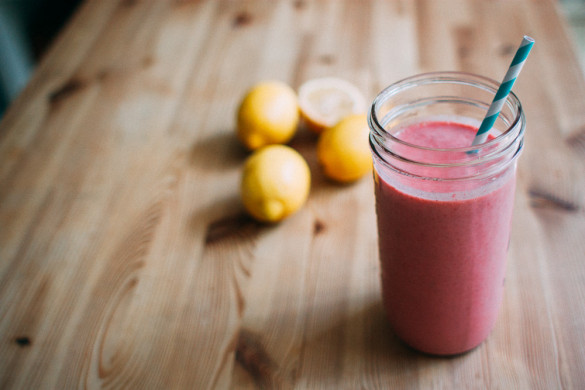
THE SMOOTHIE
WHAT IS IT? Seriously? You’d only be asking this if you’ve been living in a cave without electricity for the last 15 years.
THE CLAIM. Smoothies are a great way to “drink” your food, which is easy on digestion, fortifying your diet with variety of “superfoods” to optimize your health.
MY COMMENT: Smoothies are nothing more than a variant of a milkshake, and indeed, most people’s version of a smoothie is a milk or yogurt-based drink with fruit. The number of problems with this proposition is another blog post in and of itself, but suffice it to say that cold milk and conventional dairy products are highly problematic foods, compounded by the fact that in Ayurveda, most fruits are incompatible with dairy. These type of fruit/dairy-based smoothies will likely cause issues that range from mucus and sinus congestion, indigestion, skin issues, and joint pain depending on the person and the duration of consumption. Nowadays, however, smoothies display a huge diversity of ingredients, often eschewing dairy altogether, utilizing various grain and nut-based “milks”, coconut water, or avocado as the base. To this can be added all manner of ingredients, from acai berry to zeolite, and everything in between. Thus, any critical analysis of a smoothie needs to be based on its individual ingredients (and their interactions), some of which are reviewed below. But in practice, there are some important problems with the very concept of a smoothie itself:
- Smoothies are a beverage, not food.
Digestion begins in the mouth with chewing, a process that activates a neuro-endocrinal response that results in the up-regulation of digestive function. Lingering over your palette, slowly chewed food provides a stimulus to the brain, helping it figure out how it’s going to digest the food, giving it time to mix with digestive enzymes, including amylase for carbohydrate digestion, as well as the enzyme lingual lipase released from your tongue, which promotes proper fat digestion. - Smoothies are usually consumed cold (and raw).
They are, after all, modeled on the concept of a milkshake. According to every traditional system of medicine on earth, cold food and liquid impairs digestion, and impaired digestion leads to improper nutrition, and improper nutrition leads to illness and disease. In particular, as fatty foods are the hardest of all foods to digest, eating cold fatty foods compounds the problem, and weakens digestion further. To be sure, some people can tolerate a certain degree of cold food and beverages, like someone that displays a predominance of pitta in their constitution, but even still, cold (and raw) foods will eventually weaken even the strongest digestive fire. This is reflected in the science which demonstrates that raw or uncooked food takes much more energy to digest, and in many cases, without heat or the enzymatic activity of bacterial fermentation, many raw/cold foods aren’t properly digestible. - Smoothies aren’t a proper meal.
Part of the reason smoothies have become so popular, is that many people have been told that they should eat 4-6 small meals through out the day. The problem with this recommendation is that it is derived in large-part from Sports Medicine, which modulates diet to optimize athletic performance. But very few of us burn the same number of calories as Olympic athletes in training, and so regular schmoes like us should not need to eat so often. According to Ayurveda, we should only need to eat twice daily, a practice echoed in every other ancient dietary tradition, from practices the practices of hunter-gatherer ancestors, to the Hebrews of the Talmud. Another reason the concept of eating 4-6 small meals through out the day is that many therapists recommend it as a way to control labile blood sugar, i.e. what is called reactive hypoglycemia. But as I demonstrate in an earlier blog on eating a proper breakfast, eating 4-6 small meals through out the day, most of which are usually rich in carbohydrates, creates the very problem it is supposed to prevent. But the biggest reason why smoothies aren’t a proper meal is because in most cases they are lacking in the full complement of nutrients required by your body. Unless you are an actual health expert, that has analyzed in detail the nutrients you require and what may be lacking, a haphazard approach of adding in a bunch of “superfoods” is likely to miss the mark in providing you with a baseline of proper nutrition.
Does this mean I think smoothies have no use? No, I think they can be useful – for example, to provide easily assimilable calories for someone suffering from weight loss. Another reason would be some kind of trauma or issue with the mouth, that interferes with chewing and swallowing. Several times I have been asked developed healthier alternatives to “foods” like Ensure for feeding tube use. But none of these uses is meant for general application, including the “detox” smoothies, which if they do have this effect, are only used on a short-term basis. And if you cook your smoothie, it’s no longer a smoothie but a blended soup, and that is something else altogether!
![]()
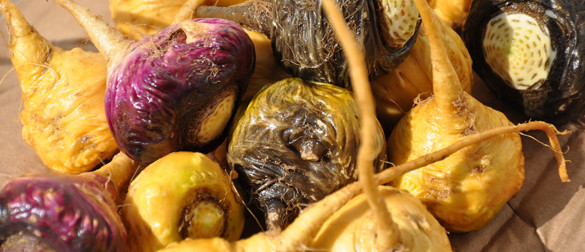
MACA
WHAT IS IT? Maca refers to the root of Lepidium meyenii, a member of the Brassica family.
THE CLAIMS. Maca is stated to be an adaptogen (supports biological response to stressors), a libido-enhancer), and a nutrient-dense “super-food”.
MY COMMENT: Maca is a turnip-like vegetable related to garden cress (Lepidium sativum), traditionally grown in the highlands of Peru. Ever thought about adding turnip to your smoothie? No? What if I charged lots of money for it, would it make more sense? While the price for Maca has come down in recent years (mostly because much of it is now grown in China), it is still a lot of money for a bag of powdered turnip. While there is some weak scientific support suggesting that Maca has libido-enhancing effects in men(1, 2 ) and could be beneficial in managing the symptoms of menopause(3, 4), I have to point out that Maca is traditionally consumed as a food, not a medicine. As a practicing herbalist, I have learned to not place my confidence in a few random studies to guide my use of a herb or food: the proper context is its traditional use. Note as well that Maca contains compounds called glucosinolates, which provide for Maca’s bitter taste, and has a goitrogenic activity that could possibly interferewith iodine uptake by the thyroid. One way to break glucosinolates down, however, is to cook them, but of course, unlike the traditional people in Peru that consume it as a staple, nobody that buys Maca as a superfood actually cooks it before using it as a supplement.
![]()
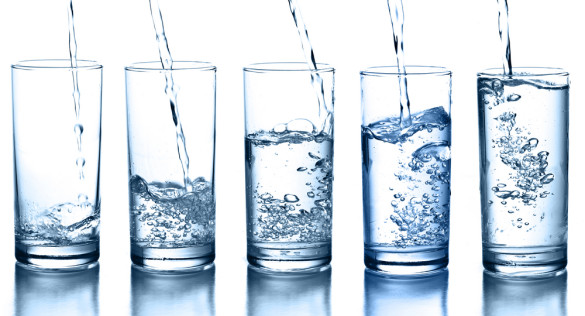
ALKALINE WATER
WHAT IS IT? Alkaline water is water that, supposedly, has been rendered more alkaline, by artificially increasing its pH through electrolysis. And I say “supposedly” for good reason.
THE CLAIMS: Illness and disease only occur when the body is acidic, and hence, consuming alkaline water prevents and treats disease.
MY COMMENT: The alkaline/acid theory of disease is rife with simplistic thinking and errors, often promulgated by people that lack even a basic background in chemistry. When we talk about the pH of the body, what exactly are we referring to? The mouth? Skin? Urine? Blood? Cerebrospinal fluid? If it’s the pH of the blood we’re referring to, it is neither acidic nor alkaline, which is the optimal environment for the myriad number of chemical reactions that occur within it. Blood pH is thus tightly controlled by homeostatic mechanisms, and diet has very little influence over this when the body is healthy. The epidemiological associations that links dietary protein with bone loss, for example, are contradicted clinical evidence, demonstrating that such associations speak more to prevailing bias than any causal relationship. So, if the alkaline/acid theory is mostly bunk, is there any benefit to drinking alkaline water? The questions begs further inquiry – what is it that makes water more alkaline? Minerals! If you have ever lived or visited the prairies, and noticed the lime build-up on faucets, sinks, tubs, and dishes, you know what I’m talking about. The potential benefit of alkaline water is because it can provide vital minerals important to your health, something I experienced when recovering from chronic dysentery in the Hunza valley, whose denizens drink the mineral-rich water that comes off the Ultar Glacier. You should know, however, that you can make water more alkaline by ionizing any mineral within it. The electrolysis units that are sold to consumers that claim to alkalize water, charge huge money for a device worth nothing more than a couple hundred bucks, and use either salt, or something like calcium glycerophosphate, to convert purified tap water into an alkaline-rich water. If you use salt, then it’s alkalized with sodium and chlorine, and you end up with “electrolysed water”, which is a dilute solution of sodium hypochlorite, AKA bleach (see MMS, below). And if it’s alkalized with calcium glycerophosphate, then you end up with an alkaline water rich in calcium and phosphate. Read below under Coral Calcium on why I think more calcium in your diet is a bad idea. Perhaps if these electrolysis units used something like glacial rock dust, we might end up with something resembling the life-giving waters of glacial rivers in places like the Vilcabamba and Hunza valleys. But I’m pretty sure this also has something to do with the location itself.
![]()
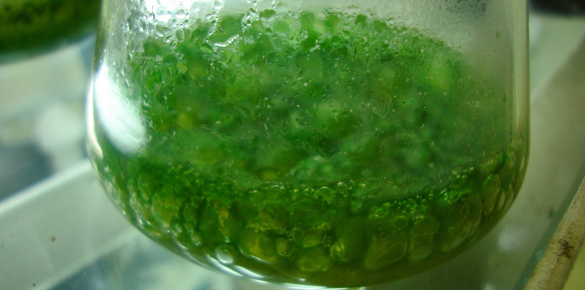
BLUE-GREEN ALGAE (BGA)
WHAT IS IT? BGA refers to a number of different fresh-water species of algae (cyanobacteria), including Spirulina and Aphanizomenon flos aquae (AFA).
THE CLAIMS: BGA is a traditional food source that is loaded with healthful nutrients, including essential amino acids, minerals, essential fatty acids, and vitamin B12.
MY COMMENT: I first encountered BGA in my first year of herb school in 1993, whose virtues were extolled by one of my fellow students as a panacea, who supplied me with reams of “data” (i.e. marketing materials) to support her assertions. I was immediately turned off by the high-pressure, multilevel marketing tactics, and upon further investigation, learnt that in another context, blue-green algae is viewed by public health officials as a toxic contaminant of drinking water. Whoa! Talk about the disconnect! Steering clear of it, BGA kind of fell off my radar for awhile, but with the advent of the superfood movement it showed up again in the mid-2000s, embraced by a new generation of smoothie enthusiasts. The first claim that BGA is a traditional food source is based on a limited number of ethnographic reports, from a very limited number of traditional groups. While these reports are often provided as strong evidence for the safe consumption of BGA, on a global basis, the consumption of BGA was actually quite rare given its distribution. No doubt this is because it is pond scum, and experience teaches that drinking water from scummy green ponds will likely make you very sick. As such, BGA thrives in shallow, stagnant, nutrient-dense water, exactly like Klamath Lake in southern Oregon, where many supplement companies source their BGA. Sitting right on a major migratory bird route, public health officials in Oregon regularly close access to Klamath lake due to toxic blue-green algae blooms. So why are we eating it again? Oh, it’s for nutrient density, right? Unfortunately, the reality is that you would have to eat an very large (and hence, very expensive) amount for BGA to have any significant impact upon your nutritional status. As for it being a B12 source, BGA actually produces a pseudo vitamin B12 that is inactive in humans and is thus not suitable as a source for vegans. Lastly, if you’re still not convinced, there is the neurotoxin angle, which include a great deal more toxins than manufacturers currently test for – even if they made their test data publicly available – which they do not.
![]()
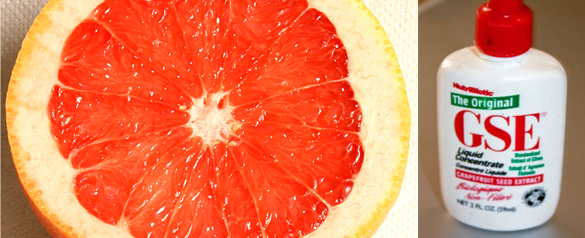
GRAPEFRUIT SEED EXTRACT (GSE)
WHAT IS IT? GSE is a proprietary extract derived from the seed of the grapefruit (Citrus × paradisi). As a proprietary product, the exact ingredients and details of the manufacturing process have not been publicly disclosed.
THE CLAIMS: GSE extract is an all-natural antimicrobial compound that can be safely used to treat infection, or used as a safe preservative in natural products.
MY COMMENTs: I have written on GSE before: here and here . If there is one product that sets my bullshit detector ringing it is GSE. This is sham product, masquerading as natural, but demonstrated time and time again to contain synthetic antimicrobial compounds such as triclosan and benzalkonium chloride that are fucking up our environment, screwing up our hormones, and contributing the problem of antibiotic resistance! Ok, sorry for swearing. It’s just a little irritating that this product still exists! If you have a passion for natural health, I heartily encourage you to boycott any company that sells GSE, or uses it as a product ingredient. Read the label – you might be surprised how many products it can be found in.
![]()

MIRACLE MINERAL SUPPLEMENT (MMS)
WHAT IS IT? MMS is a solution of 28% sodium chlorite in distilled water, described by Jim Humble in his 2006 self-published book, The Miracle Mineral Solution of the 21st Century. Humble and others suggest that MMS is to be mixed with citric acid to create chlorine dioxide, before therapeutic application.
THE CLAIMS: MMS is an effective remedy in the prevention and treatment of a wide-number of diseases, from the common cold to cancer.
MY COMMENTs: I’m almost willing to let evolution “chlorinate” the gene pool on this one, but for the dignity of my craft, suffice it to say that MMS is both unsafe and not a natural product. Sodium chlorite is closely related to household bleach, used in industrial processes to bleach paper, and as a disinfectant. Take a look on the side of a bleach bottle – what more about a skull and crossbones do you need to know? With an LD50 of 350 mg/kg in rats, as little as a 10-15 grams of chlorine dioxide is lethal in humans. Just last year, an individual in Washington state was convicted for the sale and distribution of MMS, and is now looking at the possibility of a few decades in prison.
![]()

COLLOIDAL SILVER
What is it? Colloidal silver is a solution of silver nanoparticles less than 0.1 micron in size, suspended in a liquid (forming a colloid).
THE CLAIMS: Colloidal silver is a natural alternative to conventional antibiotics, and can used to treat bacterial infection, as well as other pathogens such as viruses and intestinal worms.
MY COMMENTs: When silver is present in sufficient concentration and directly comes into contact with bacteria, it does indeed exert a broad-spectrum antimicrobial activity. This was the idea behind dropping silver nitrate into the eyes of newborn babies to prevent conjunctivitis (an unnecessary practice), and is the idea behind weaving silver fibers into clothing like underwear and socks. So yes, silver is antimicrobial, but the larger issue is when silver is ingested – does it have the same effect as when applied topically, and is it safe? Remember, just because something exerts an antibacterial effect in a petri dish, or when it’s applied topically, doesn’t mean that it has that same effect systemically. The research I’ve surveyed suggests that silver is not a reliable compound for treating any kind of infection systemically, and if you ingest it too often, it will accumulate in your body and irreversibly turn your skin a zombie-like, bluish-grey hue. As to the importance of it being a colloid, the antimicrobial effect of silver is due to silver ions released from the silver nanoparticles in solution, but this is something that can also be observed with other forms of silver as well, i.e. silver fibers in clothing. But while silver does exert antimicrobial effects, its use in supplements, clothing and other applications is poisoning the environment, and fostering the emergence of antibiotic resistant bacteria.
![]()
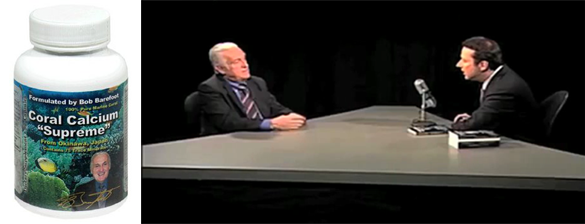
CORAL CALCIUM
WHAT IS IT? Coral calcium is a health supplement derived from fossilized coral reefs, composed calcium carbonate, and small amounts of magnesium and trace minerals. Mined from fossilized coral beds, coral calcium is ground to a fine powder, heat treated or ozonated for sterilization, and mixed with additives including silicon dioxide, rice flour, and magnesium stearate before being encapsulated and bottled.
THE CLAIMS: Disease is caused by the acidification of the body, and a lack of minerals, especially calcium. Coral calcium alkalizes and drives out this acid, addressing the underlying cause of heart disease, as well as cancer, heart disease, diabetes, and Alzheimer’s.
MY COMMENT: If you stayed up past your bed time in the last 10-15 years, your glazed eyes staring at the television, then almost for sure you saw the infomercials with Robert R. Barefoot, interviewed by con-man Kevin Trudeau (Natural Cures “They” Don’t Want You to Know About). It was mildly entertaining for about 30 seconds to listen to their lugubrious claims, and the way in which Barefoot and Trudeau wove together half-baked health theories with charges of conspiracy. Barefoot states that his coral calcium is mined in Okinawa, from the same type of fossilized coral rock that comprises the aquifers used by the Okinawans to draw their water from, which some have claimed, is the reason for their (once) remarkable longevity. The reality is that coral calcium is hardly unique as a source of calcium carbonate, and is found in many mineral sources such as limestone, chalk, and marble, as well as oyster and egg shell. In other words, as a source of calcium carbonate, coral calcium does not deserve the price it fetches nor the attention it gets. It is after all, a kind of rock, and humans generally don’t eat rocks – whole or powdered. Besides which, calcium isn’t all that hard to get in your diet, and despite doctors telling people to consume more calcium to prevent osteoporosis, it’s not so much a lack of calcium – which is a hard but very brittle mineral – but a loss of collagen that provides for a decrease in bone strength. This is why bone-soups are good for osteoporosis prevention and treatment, because not only does it provide for all of the minerals required by bone, including calcium, but also the glycosaminoglycans and proteoglycans that feed the connective tissues of our bones. Of course coral calcium also contains small amounts of macrominerals such as magnesium, and trace minerals such as zinc, but there are other more digestible and sustainable dietary sources of minerals such as seaweed and nettle. And lastly, despite the claims of made by Robert R. Barefoot, there is emerging evidence that high doses of supplemental calcium leads to the calcification of soft tissues in the body, and thus actually contributes to etiology of diseases such as atherosclerosis.
![]()
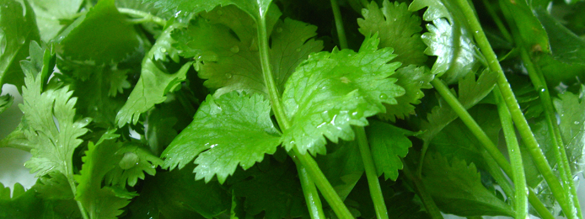
CILANTRO
WHAT IS IT? Cilantro (Coriandrum sativum) is an exceptionally common garden herb used in a variety of cuisines, consumed as both the fresh herb (cilantro, Chinese parsley), and as the seed (coriander, dhaniya).
THE CLAIMS: Cilantro tincture is stated to assist with mercury detoxification.
MY COMMENT: The origin of this assertion seems to some from Japan, with a series of studies published in the mid-1990s by Dr. Yoshiaki Omura, editor and publisher of Acupuncture & Electro Therapeutics Research. This is a quarterly journal that specializes in the use of questionable diagnostic techniques such as the Bi-Digital O-Ring Test (BDORT), a procedure in which a patient forms an ‘O’ with his or her fingers, and the diagnostician evaluates the patient’s health by trying to pry them apart. Omura states that he accidentally discovered the virtues of cilantro after eating Vietnamese soup, claiming that it promoted the excretion of lead, mercury and aluminum in the urine. Here in North America, these claims for cilantro were taken up by Dr. Dietrich Klinghardt, a non-herbalist health professional that received a lot of promotion on Dr. Joseph Mercola’s website. Despite all their claims, however, there is no scientific evidence that cilantro mobilizes mercury from the body when it’s ingested. Not that I can’t believe it might – after all – perhaps many herbs that have a similar or even more powerful diuretic activity, such as parsley or ajwain, have this same effect. But consider too that the doses recommended by Dr. Klinghardt for mercury detoxification are less than what someone would obtain from eating it (particularly if you like cilantro, like me). Similar to Maca, the therapeutic use of cilantro in mercury detoxification suffers from an irrational belief that food-based remedies in low doses exert a more powerful effect than eating them as a food. Consider as well, that in the Rasa Shastra tradition of Ayurveda, which actually utilizes the therapeutic effect of poisonous minerals such as mercury only after extensive purification, that cilantro plays no role in the purification of mercury, and nor is it prescribed in cases of accidental poisoning. This is despite the thousands of years that cilantro has been a part of the Indian materia medica. Perhaps the problem here lies not so much with cilantro, but to the entire field of mercury detoxification in alternative and complementary medicine, which suffers from a lack of objective data, empiricism, and tradition.
![]()
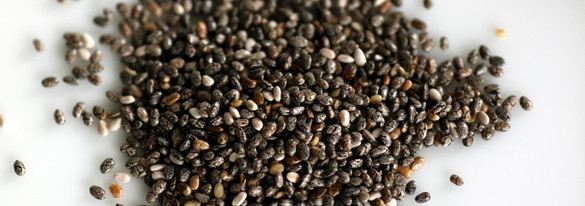
CHIA SEED
WHAT IS IT? Chia seed refers to the seed of (Salvia hispanica), a member of the mint family, native to central America.
THE CLAIMS: Chia seed is a superfood traditionally consumed in Meso-American society that is rich in omega-3 fatty acids, protein, and vital minerals.
MY COMMENT: Much of the information on the traditional use of chia seed is sketchy, based on surviving pre- and post-Columbus accounts. The accounts indicate that chia was grown as a crop by Meso-American peoples, who utilized different parts of the plant for different purposes. With regard to the seed, the vast majority of these sources describe chia seed as medicine, rather than a food (Cahill 2003, p 609). And this is for good reason. Like flax and hemp, Chia is exceptionally high in omega-3 and omega-6 fatty acids, but as I describe in my post on flax, these polyunsaturated fatty acids are exceptionally unstable, and quickly peroxidize when exposed to heat, light or oxygen. It is for this reason that hemp and flax are generally eaten raw, and the same applies here: cooking chia seed turns it into a toxic substance. Like flax and hemp, when raw whole chia seed is ground up and mixed with water, it produces a gooey, fiber-rich mucilage that can be ingested as a bulk laxative, and to soothe intestinal inflammation. The slippery, slimy and cooling properties of chia are also enjoyed in Southern Mexico and Guatemala as a beverage called “chia fresca”, mixed with lemon and sugar. But this is about the extent of its benefits, at least with regard to medicinal and culinary uses. The claims that chia is a source of nutrients including protein, minerals and vitamins is countered by the fact that the unprocessed seed contains anti-nutrient factors such as phytic acid that either binds up these nutrients or otherwise inhibits our ability to digest them. Normally we might cook a food like chia to deactivate these anti-nutrient factors, but we can’t do that without damaging the essential fatty acids. So in this way, chia is really nothing more than an expensive fiber supplement – which is ok – but hardly a proper food, and even less a superfood. Given my long history with food allergies, I am something of a canary in a coal mine, and when I’ve carefully chewed raw chia seed, I get a distinct inflammatory response in my mouth. This has been sufficient for me to warn off others, but my experience is bolstered by the literature, which shows that chia seed consumption may enhance inflammation, marked by an increase in serum interleukin 6 (IL-6), monocyte chemotactic protein (MCP), and immunoglobulin E (IgE).
![]()
In part two, I will continue my review, but in the meantime if you have any suggestions or comments, I’d love to hear them!
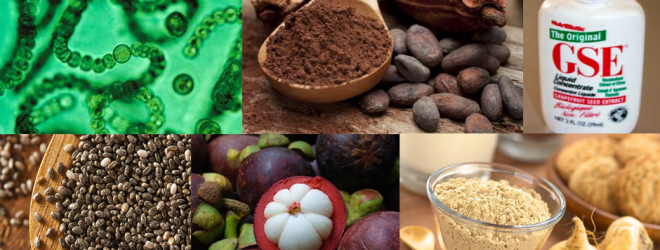
 Follow
Follow

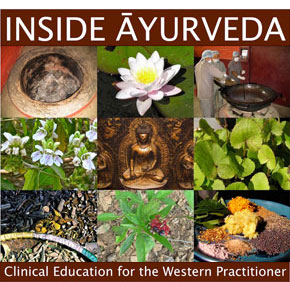


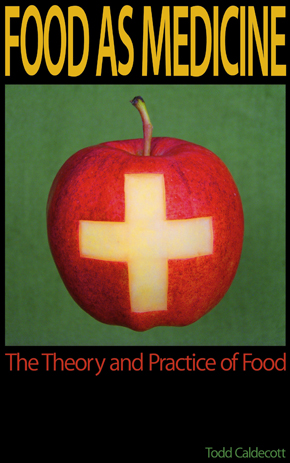
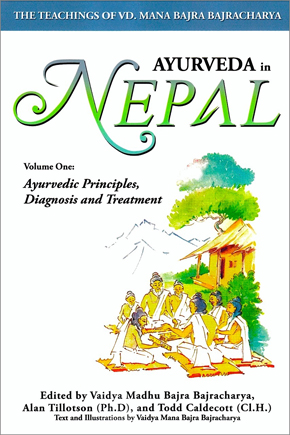
Speak Your Mind
You must be logged in to post a comment.